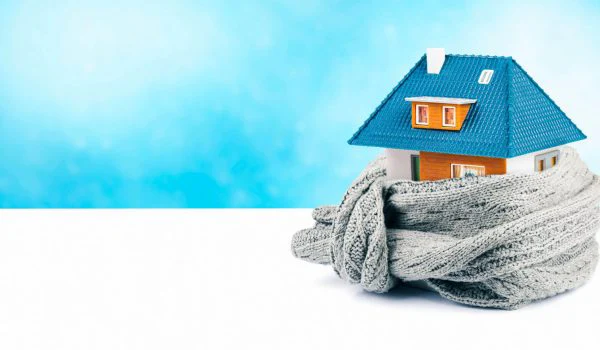
How Much Insulation Do You Need for R38? Thickness by Material Explained
Homeowners across Los Angeles ask for R38 because it strikes the right balance for attic performance in a mild-to-warm climate with costly electricity. Building codes in many Los Angeles neighborhoods accept R30 to R38 for attics, yet R38 provides steadier indoor comfort and better control of summer heat gain from the Valley to the Westside. This guide breaks down how thick each insulation material needs to be to reach R38, where it fits in local roof structures, and how Pure Eco Inc helps homeowners get it installed cleanly and correctly.
What R38 Means in Plain Language
R-value measures resistance to heat flow. Higher R slows heat transfer more. R38 is a total system target, not a thickness by itself. The inches it takes to hit R38 depend on the material’s R per inch. It also depends on real-world factors like settling, compression, and installation gaps. In Los Angeles attics, R38 usually pays off through reduced AC runtime, quieter rooms, and fewer hot spots above hallways and south-facing bedrooms.
R38 Thickness by Material
The values below reflect typical manufacturer data and field experience. Actual results vary by product line, density, and install quality.
- Fiberglass batt (low to mid density): about 12 to 12.5 inches to reach R38. Pre-cut “R38 batts” exist and are roughly that thick. Compression into a shallow cavity lowers the true R.
- Blown-in fiberglass (open attic): roughly 13 to 14 inches installed thickness to net R38 after settling. Installers add a small cushion to offset minor settling in the first year.
- Blown-in cellulose (open attic): about 10.5 to 11.5 inches installed thickness for R38. Cellulose settles more than fiberglass, so pros install to a higher initial depth per the bag chart.
- Open-cell spray foam: around 10 to 11 inches to reach R38 in a roofline application. Open-cell foam is air-sealing but vapor-permeable and needs the right roof assembly in LA’s dry-warm climate.
- Closed-cell spray foam: about 5.5 to 6 inches for R38. It also functions as an air barrier and a Class II vapor retarder. It is dense and ideal where space is tight, but material cost is higher.
- Rockwool/stone wool batts: similar to mid-density fiberglass. Expect 11.75 to 12 inches of batt thickness for R38 in an attic overlay.
These thicknesses assume full, uncompromised depth. If the insulation is squeezed under ducts, crisscrossed by cables, or stuffed below the top of the joist, the effective R-value drops.
Where R38 Fits in Los Angeles Homes
Los Angeles has a mix of construction: 1950s ranch homes in Sherman Oaks, Spanish bungalows in Highland Park, and contemporary builds in Silver Lake. Most have vented attics with 2x4 or 2x6 ceiling joists. These joists are shallow, so hitting R38 with batts alone is tough without building up height.
For vented attics, the practical path is to blow fiberglass or cellulose above the ceiling plane to the target depth. Installers use depth rulers and bag count to verify coverage. For cathedral ceilings, foam or a combination assembly is typical due to limited cavity thickness. In tight crawl spaces in the Palisades or older beach cottages, closed-cell foam can deliver R38 in limited inches and also control moisture from coastal air.
The Thickness Trap: Compression and Settling
A batt labeled R38 will only deliver R38 if it sits at its full loft and fills the cavity without compression. If a 12-inch batt is squeezed into a 9.5-inch space, the R-value drops well below 38. Likewise, blown insulation needs the specified installed thickness and density. Installers should set depth markers every few hundred square feet and keep a photo record of coverage and bag counts. Pure Eco Inc documents both for homeowners and for title packets during a sale.
Attic Strategies That Work in LA
Most homes in Los Angeles benefit from an attic-first approach. That means air sealing first, then insulating to R38. Air leaks around can lights, top plates, plumbing penetrations, and attic hatches often waste more energy than thin insulation. Sealing these gaps stops hot, dusty attic air from entering living space and preserves the R-value you are paying for.

In homes with existing R19 batts between joists, crews often top them with blown-in fiberglass or cellulose to reach R38 or higher. The overlay should be even, not mounded. Ducts should sit above or within the insulation blanket, or be insulated separately to R8 or better. If the attic has knob-and-tube wiring, a licensed electrician must decommission it before adding loose-fill.
R38 in Cathedral Ceilings and Flat Roofs
Los Angeles has many low-slope and flat roofs, common in Mid-Century homes and duplexes. These assemblies have small cavities and limited ventilation, so material choice is sensitive:
- Vented vaulted ceilings: achieving R38 with batts needs a deep cavity plus a vent channel. If the cavity is shallow, consider dense-pack cellulose with baffles, or foam against the roof deck with a vent channel maintained by baffles.
- Unvented roofs: closed-cell spray foam can reach R38 in 5.5 to 6 inches directly under the roof deck, creating an air and vapor retarder. In some cases, a hybrid approach uses 2 to 3 inches of closed-cell against the deck for condensation control and fills the rest with open-cell or fiberglass to reach R38 total.
Local code and roof warranty details matter. Pure Eco Inc coordinates with roofers to protect shingles and maintain manufacturer requirements, especially in South Bay and Valley heat.
How R38 Plays With Los Angeles Code and Climate
Los Angeles falls under Title 24 energy standards. Attic R38 is a common target for retrofits across LA neighborhoods because it delivers meaningful summer load reduction while staying buildable above existing ceilings. In marine-influenced areas like Santa Monica and Venice, controlling moisture at the roof deck is part of the design, but the dry LA basin generally favors vented attics with deep loose-fill. R38 does the heavy lifting against solar heat gain on July afternoons when attic temperatures can run 30 to 50 degrees above outdoor air.

Material Comparisons Homeowners Ask About
- Fiberglass vs cellulose at R38: Both perform well. Fiberglass resists settling and stays fluffy. Cellulose packs tightly around wiring and irregular bays and can dampen sound more. In dusty attics, cellulose’s density helps block air movement, but proper air sealing is still the priority with either option.
- Spray foam at R38: It brings air sealing in one step. In vaulted spaces, it solves the depth problem. The trade-off is cost and the need for a clear plan for roof moisture and future service access.
- Rockwool at R38: Excellent fire resistance and sound control. Heavier batts need careful fitting to avoid gaps, especially around can lights and braces.
Common Mistakes That Undercut R38
- Gaps at edges and around boxes that add up to square feet of missing coverage
- Blocking soffit vents with insulation and choking the roof’s airflow
- Laying batts over IC-rated recessed lights without checking labels or using covers
- Forgetting the attic hatch, which can bleed heat without a weatherstrip and insulated cover
- Ignoring duct losses; uninsulated or leaky ducts can erase the gains from R38
A Simple Attic Plan That Works
- Air seal. Caulk and foam top plates, penetrations, and the hatch. Install fire-rated covers over IC-rated cans if needed.
- Protect ventilation. Add baffles at soffits before blowing insulation.
- Add depth. Blow fiberglass or cellulose to the target R38 thickness with depth rulers visible at regular intervals.
- Address ducts. Seal with mastic and insulate to at least R8, or bury ducts within the new insulation where feasible.
- Verify. Record bag counts, take photos of rulers, and label the hatch with final depth and material.
What Homeowners Can Expect From R38 Upgrades
Most Los Angeles clients report cooler bedrooms on the second level, fewer hot-cold swings, and AC cycles that run shorter. In older Valley homes, expect noticeable improvement on peak afternoons. Energy savings vary by house size, duct condition, and thermostat habits, but many projects show meaningful reductions in summer electric bills and quieter interiors.
How Pure Eco Inc Handles R38 in Los Angeles
Pure Eco Inc specializes in attic retrofits across Los Angeles, CA, with a focus on clean prep, air sealing, and correct depths. Crews remove rodent waste and old, compromised insulation when necessary, repair basic air leaks, install baffles, and then blow to measured R38. For special assemblies in Beverly Hills, Pasadena, and coastal ZIP codes, the team specifies foam or hybrid systems that meet Title 24 and roofing requirements. Every project includes photo documentation and a clean finish at the hatch.
Homeowners searching for r38 insulation Los Angeles often want a straight answer on thickness and the right material for their attic or roof. The team provides that clarity on a quick site visit, along with a firm price and a realistic schedule.
Ready to attic insulation Los Angeles get the right R38 solution for your home? Call Pure Eco Inc or request a visit online. A specialist will measure your attic, confirm the structure, and recommend the exact thickness and material that will work in your neighborhood and roof type.
Pure Eco Inc. provides professional attic insulation and energy-saving solutions in Los Angeles, CA. For over 20 years, our family-owned company has helped homeowners improve comfort, reduce utility bills, and make their homes more energy efficient. We specialize in insulation upgrades, spray foam installation, and attic cleanup for homes across Los Angeles County. At Pure Eco Inc., we believe in treating our customers like family and creating a greener, healthier living environment for every household we serve. Call today to schedule an attic insulation inspection or get a free estimate. Pure Eco Inc.
422 S Western Ave #103 Phone: (213) 256-0365 Website: https://www.pureecoinc.com Social Media:
Facebook |
X |
Instagram |
Yelp
Map: View on Google Maps
Los Angeles,
CA
90020,
USA